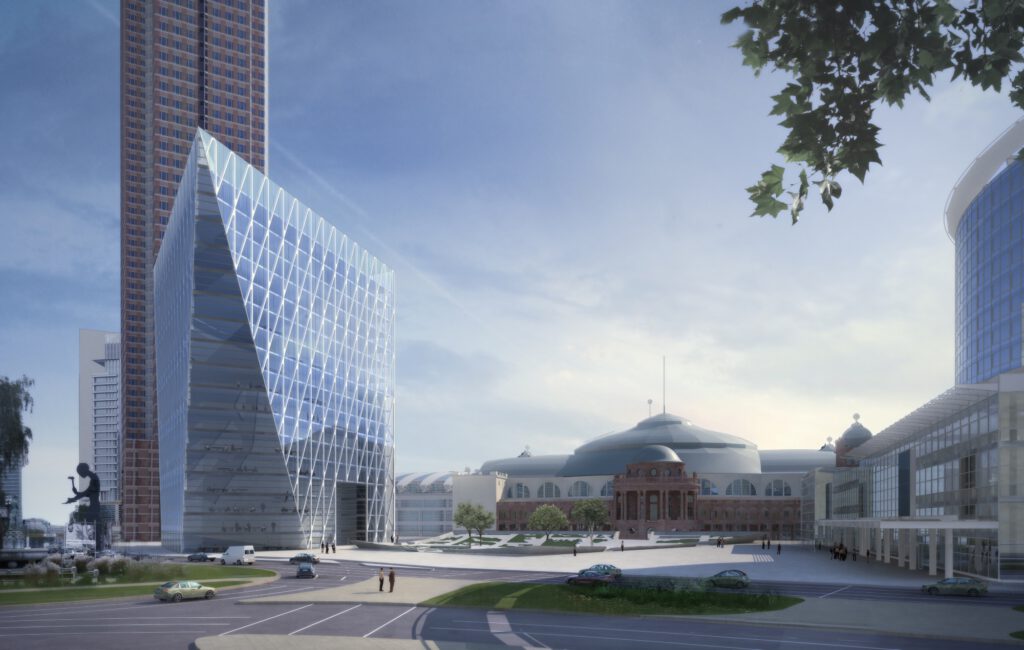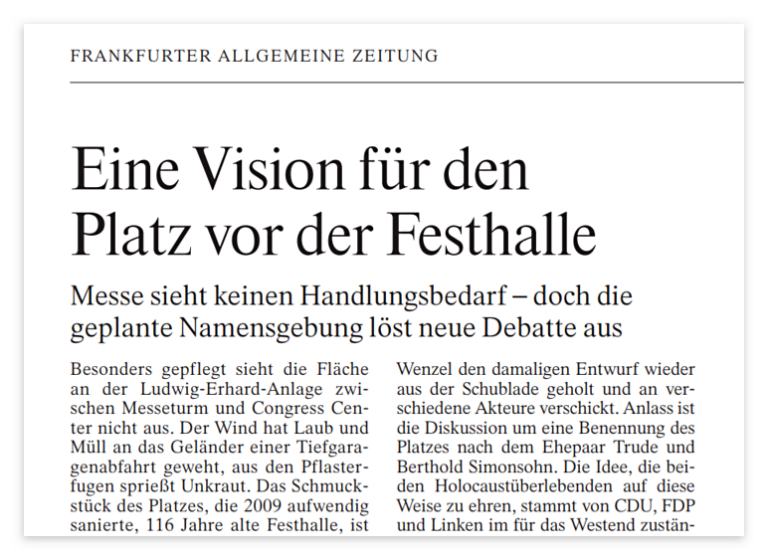Günter Murr reports on the status of discussions regarding the square between the Messeturm, Festhalle, and Frankfurt Trade Fair. The topic is currently high on the agenda because the square is due to be renamed and, in this context, its aesthetic and functional upgrading, which has been pending for almost two decades, is also being reconsidered.
The redesign was supposed to have been launched in 2007 with the award-winning design by RMP Stephan Lenzen Landscape Architects (Bonn) and TEK TO NIK Architects. The fact that this solution even exists has since been forgotten. What should happen now? What could be done?
The article begins with a site visit. Günter Murr describes the current situation as unchanged design neglect: “The area at Ludwig-Erhard-Anlage between the Messeturm and Congress Center does not look well-maintained … weeds sprout from the pavement joints. The gem, the Festhalle, which was extensively renovated in 2009, is … inaccessible and often … barely visible. A single bench invites you to linger…”
Against the backdrop of the current discussion about the name of the square, its neglected state is once again attracting political attention. The FAZ quotes Suzanne Turré, chairwoman of the CDU faction in the local council: “It’s scandalous how this square looks.”
However, according to the FAZ, it is difficult to predict what will happen. According to Günter Murr, the trade fair sees “no need for action.” The article contrasts this desire for inaction with the opinion of Manfred Wenzel: “Anyone who knows, understands, and loves classic European squares is pained by the fact that this square radiates a design neglect that is hard to beat.”
At this point, we recall Günter Murr’s older article, which appeared in April 2023 under the headline “No successful urban space in all of Germany,” also in the FAZ. On the occasion of the presentation of Christoph Mäckler’s commendable and important “Handbook of Urban Design” there was a discussion event with architects from all over Germany, which also dealt with successful and unsuccessful square design.
Christoph Mäckler emphasized at the time that the aesthetic design of public urban spaces is not the most important aspect. Its suitability and attractiveness for social uses are primary. In the article, he was quoted as saying: “It must be possible to simply sit down in a square and enjoy its beauty … It is unacceptable that we, as a wealthy society, are unable to design public spaces in such a way that people feel comfortable.”
In the case of Messeplatz, Frankfurt’s urban planners could now take the helm and, in line with Christoph Mäckler’s vision, design a social, urban cultural space that has so far been regarded as a kind of traffic thoroughfare, similar to the areas in front of a motorway restaurant.

